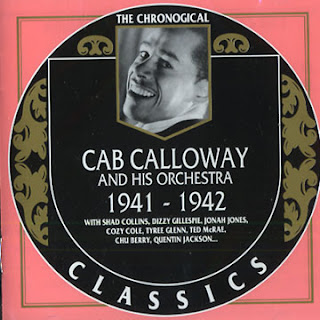Nina Simone - Silk and Soul
Jazz history has been riddled with all kind of fights about what constitutes jazz and how to define it. There are a lot of inherent biases and problems in jazz history and one of the thorniest is jazz vocals. Like fusion and free jazz, it's practically an independent genre on its own where its practitioners with the other sub-genres of jazz. That's not to say that jazz vocalists don't appear in jazz history texts, they do. At least, the big stars like Billie Holiday, Ella Fitzgerald, Sarah Vaughan, Anita O'Day, Louis Armstrong, etc. But the range of what constitutes a jazz vocalist is far more diverse than instrumentalist. Nina Simone is a good example of this as her stylistic diversity is extremely wide, encompassing jazz, blues, gospel, soul, rhythm and blues, and pop. Silk and Soul from 1967 is her second album for RCA and is primarily composed of soul songs. So the groove is not swing, but out of soul, rock, and pop. So with this album, Simone breaks some stylistic boundaries. Because she is such a strong singer, she pulls it off well and the album works.
Simone's career had become progressively political and in recent years. 1964's "Mississippi Goddamn" is one of her more outspoken songs and the power of that song is due to the combination of the lyrics and her voice. On "I Wish I Knew How It Would Feel To Be Free" from Silk and Soul she is less angry. Instead, the message of the song is powered by her elegant delivery demonstrating poise and dignity. The song was written by the great jazz pianist Dr. Billy Taylor, a vastly important figure in jazz history beyond the music who was a pioneer jazz educator and a restless advocate for jazz as 'America's Classical Music'. To say his identity is equated with jazz is an understatement, but this is a gospel song. Simone's version is definitive and a major reason its becoming an anthem for the Civil Rights Movement.
In the end, her voice really carries the album. Her voice is somehow stylistically flexible enough that she can transpose her voice to any setting. She sounds at home on the soul songs ("It be's that way sometimes", "Turn me on", and "Some say") which showcase her big sound and powerful voice. She does not overwhelm the song or the listener, instead she lets the power of the words and especially her voice to grab the listener. Having worked as a pianist/singer in the 1950's, she demonstrates considerable restraint without diminishing the emotional effect. I agree with the all music reviewer who commented that the soul would really have taken off had they recorded in Memphis or Muscle Shoals. They recorded in New York and while the band is still good, they are definitely more pop oriented.
The pop music is more uneven. Listening to an accomplished singer like Simone on "The Look of Love" is a revelation of sorts. The arrangement is less dramatic than other versions and the focus is not on the content or the suggestive nature of the lyrics. Instead, Simone's voice highlighted and like any good jazz singer, it's not about the song, it's how it is sung. I always believe that great jazz musicians should sound great on easy tunes and the same applies to.vocalists. "Cherish" is a pop production with a big studio orchestra with overdubbed made to sound like a choir of Nina Simones. Even on this ridiculous track, she manages to still sound intimate when captured on her own.
 |
| Germany, 1967 |
Simone always sounds intimate no matter what she sings and on "Turning Point", a song by Martha Holmes that tackles racism, the intimate arrangement with string orchestra and harpsichord adds to the poignancy of Simone's performance. "Love O'Love" was written her then-manager/husband Billy Stroud and is Simone accompanying herself on piano. Performed rubato, Simone takes her time with this gospel-tinged song. The last song of the album, "Consummation", was written by Simone accompanied by orchestra. A beautiful introduction of solo clarinet leads to a nice duet with Simone's voice before the orchestra joins in along with Simone's piano. Based on the standard "For All We Know", she delivers a passionate, grandiose performance that showcases her control and confidence she exudes with her voice.
There is nary a swing song on this album and the production at times is dated, but to my ears Simone is a jazz singer. This is due to her ability to personalize songs and to focus the attention on her voice and not the material. Most other singers would have tanked singing at the emotional level demanded by some of these songs. Simone makes some of the weaker material on this album stronger and hits it out of the park when the material is first rate.
My main complaint has to do with the mixing and production values of the 1960s. Her voice is mixed higher than the rest of the band and she sounds so obviously overdubbed, especially with the tracks with the band. Altogether, it really diminishes the interaction of the group performance. Fortunately her voice makes up for these problems. Today she is more well-known for her social activism, but hopefully she'll also be remembered and admired for her singing.





Comments
Post a Comment